Koryu Techniques
Will They Help Your HEMA?
Part 3 of a 5-Part HEMA Series
By Paul 'Batman' O'Brien
B.A., N.C.E.H.S., Dip. Acu., Adv. Dip. OBB, Cert Clin. Med. Pn1, PN-SSR, PN-NCA, M.AFPA, M.ETCMA, M.C.Th.A.
Koryu Techniques - finally the good stuff! In part one I laid out the essential difference between Koryu and HEMA. In Part 2, we looked in detail at Koryu Literature and how it differs from HEMA treatises. Now, finally we get to the stuff most are really interested in - the moves. :-D
"“What are the equivalent to longsword cuts like krumphau or schielhau in Koryū kenjutsu?. What Koryū teaches these techniques and how can I use that to make my HEMA better?”, or “what are your katana combat drills, where can I learn them, I am creating a katana curriculum for my HEMA club”.
As suggested in the previous articles, there is more to Koryū than just fancy Koryu Techniques. There are the intrinsic religious and spiritual beliefs of Shintō, Taoism, Confucianism and Esoteric Buddhism, woven through the fabric of Koryu Techniques. To explain just a superficial understanding of these took me two books! ;-) This is how deeply embedded into the fabric of the Koryū are these ideas, not to mention the societal and historical influences brought to bear upon the Koryū. And I’ll come back to that in just a moment, but first a more direct answer...
We do not have similar cuts or even stances throughout the Koryū themselves.
The way I hold a sword in hasso no kamae in Hyōhō Niten Ichi-ryū is very different from how I take hasso no kamae in Shinto Muso Ryu. Even in Koryū, different branches will hold the sword entirely differently within the same kamae or position. In Hoyho Niten Ichi Ryu for instance we hold the sword in hasso no kamae tight to the left ear, are arms raised as high as possible, nearly at full extension, with the sword pointing vertically. Another branch of Niten Ichi ryū (not the mainline), hold the sword in hasso by keeping the elbows of both arms levels with the shoulders and the sword resting on a horizontal plane. Totally different, both hasso no kamae. There are subtle but substantial differences even between two overhead cuts, such as kirioroshi and kiriotoshi.
These differences are the lifeblood of that school’s unique psycho-physical organization, which in turn changes how the student of that school acts on a fundamental level;
“the thousands of hours of effort the warrior devoted to training would have provided him with a large body of experience/knowledge which actually created a change in the way he thought and reasoned. He thus attained the ability to deal with larger "chunks" of internalized knowledge. The aim of this method was to give the trainee the ability to make intuitive leaps in the midst of combat instead of taking a plodding, analytical approach to dealing with a dangerous enemy”
- Hall, Dr. David A. “Kata”. https:// Koryū.com/library/dhall1.html
Koryu Techniques are taught in such a way as to provoke this physiological adaptation, the expressions of tactics and philosophy hardwired into the nervous system through rigorous practice until it changes who you are on the deepest level. It is not about “combat drills” it is a lived practice.
“A master teacher passed them on to a disciple in a way that required the student to use intuition under stressful conditions; in several martial traditions this was accomplished in front of altars indicating a line of direct transmission from the divine”
- Hall, Dr. David A. “Kata”. https:// Koryū.com/library/dhall1.html
The Physical Dimension of Koryu Techniques
I see the reverse of this a great deal in HEMA students actually. It is not uncommon for me to be asked to provide guest instruction at HEMA schools or at seminars. Equally, it has not been uncommon for someone to seek out and join the dojo I teach in, coming from a prior or current HEMA background.
Inevitably there is a problem. The body mechanics of a HEMA enthusiast are incompatible with the body mechanics of Koryu Techniques of Swordsmanship for example. Case in point, I had a young man in the dojo several years ago. They were a HEMA student for about 2 years. They had been studying Budo for about a year. And they had the single worst cutting mechanic (for JSA) I have ever seen.
Now, this was a hard-working and attentive student. They listened to instruction and worked hard to improve. I would explain how to wrap the left hand over the tsuka, and how to wrap the right hand. How to perform tenouchi and chibori. The primary importance of the left hand in the cut. And they would diligently practice this. But the moment they were placed under pressure in a partnered technique, they would perform a totally different cut. One in which the left-hand drops and the right hand is pushed forward, with the left hand pulled up behind it, in from a JSA would be a very open, weak, hand position. Why? Why would they do this? It isn’t even how it is taught in Fiore dei Liberi's Fendente method, the movement has already been corrupted by HEMA clubs because it’s tournament effective.
When performing stepping cuts they lean forward with the body and cut with the rear foot off the ground. From a Koryu Techniques perspective, this is entirely backward to our body mechanics, but to the HEMA student, it is a textbook Oberhaw for competition. Again the patterns of movement they have trained their body to perform are nearly always directly opposed to the methods of body movement and sword control of the Japanese systems.
The hand position offers no connection of the sword to the body through the pisiform bone. The HEMA movements predominantly seem to be performed by the upper body, by contrast the Japanese systems stress moving from the centre and driving the hips lower.
Sadly, this student did not progress in the study of Koryū. They could not develop the habitual body mechanic of the Ryū, and thus the neurological and psychological principles of the Ryū, while they continued to train the body with a different physiological organisation. Ultimately, after 2 years they quit Koryū practice entirely. It was “too difficult, too boring, the same thing again and again”. They preferred to “play and fight and have fun”. Okay.
Ultimately, without great care and diligence, two conflicting programs will fry the CPU (brain) and hardware (body).
Koryū are flowing traditions that teach you a very specific manner in which to physically organise yourself. This physical organisation triggers, develops and enhances a psychological mindset and attitude. This is unique to the Ryū. It allows, in a way, a spirit of very old warriors to inhabit you for a time. (I am not saying that a disembodied spirit actually possesses you - that's fantasy BS). Koryū are designed to preserve a series of individuals personality, strategic insight and physical movements attached to a unique psychological mindset.
And before the objection is raised that this is an elitist statement, I assure you this is just a simple reality of the study of Koryū. This is, in part, why Koryū often don't mix. Why you are dedicated to one specific school. Not because they are elite, but because the introduction of other arts can introduce foreign body mechanics and thus a foreign psycho-neurology into your practice. Essentially a virus that could, and likely will, corrupt you.
Often other schools of Koryū will restrict you from training in other Koryū styles so as to keep the physical organisation of the body unpolluted. Only when the student had assimilated that physiology to the deepest level would they be allowed to explore other Koryū. By this stage they will have developed sufficient understanding of their own body mechanics and the ryū's so as to prevent cross contamination, which would of course corrupt the teachings. And again, for the Koryū practitioner the preservation of their Koryū is the utmost consideration of their practice.
“The most important lessons cannot be conveyed by overt explanation, they must be experienced directly; the essence of a ryuha’s kabal can never be wholly extrapolated, it must be intuited from examples in which it is put into practice.”
- Friday, Dr. Karl. “Kabal in Motion”. Sword and Spirit; Classical Warrior Traditions of Japan Vol 2. Koryū Books 1999
“Learning two ryū is actually very hard – I think most people who do this are technique-greedy, and they easily can become ryū collectors. They learn different sets of kata, but nothing enters their bones. They do the ryū, they do not become the ryū. It is actually profoundly difficult to truly do justice to one ryū; to do true justice to two or more is exponentially more difficult.
Araki-ryū filled my marrow. I was already shihan-dai in Toda-ha Buko-ryū after 12 years of training, when I actually did my first real Toda-ha Buko-ryū kata. I remember it vividly – it felt so different compared to Araki-ryū, so powerful in its own unique way. I recall this moment when Toda-ha Buko-ryū finally coalesced within my nervous system, a wonderful moment of revelation. There is a certain level at which, perhaps, all martial ryū are the “same” – but from another perspective, they are profoundly different, with different psychological and physical organization. I literally become a different person when I am doing each of those ryū”.
- Erard, G. “INTERVIEW WITH ELLIS AMDUR – PART 1: MARTIAL JOURNEY FROM AIKIDO TO Koryū”, https://guillaumeerard.com/aikido/interviews/interview-with-ellis-amdur-part-1-martial-journey-from-aikido-to- Koryū/
The Metaphysical Aspect of Koryu Techniques
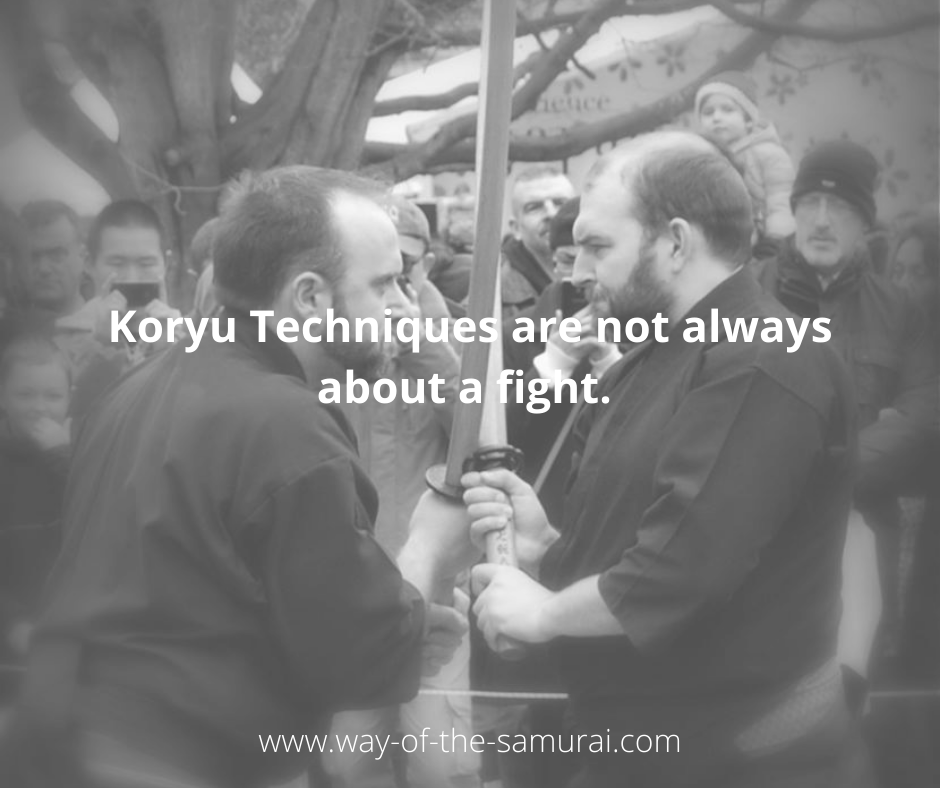
And this brings me to the next issue with the Koryu Techniques, at least the schools I study. Koryu Techniques are not always about a fight. Many, if not all, of the techniques of the ryū are designed to teach you to think and feel and react in certain ways. You are conditioned, brainwashed if you will, by moving in a physical manner over and over again that creates a specific psychological mindset. Psychological organisation through physical organisation.
Musashi himself writes as much at the very start of the Go Rin no Sho:
"Simply learning sword skills, it is impossible to understand the skills of the sword. Needless to say it doesn't come up to hyōhō. [Although some people are claiming that they are teaching the full way of the sword, they are only teaching techniques. You can't learn hyōhō by only learning techniques]"
- Miyamoto Musashi, Go Rin no Sho, 1.1 (trans. Miki Takeshima)
What does Musashi mean by this? Well, for example within the Hyōhō Niten Ichi-ryū the influence of In and Yo (Yin and Yang) are deeply entwined within the ryū. The first clue is within the name of the School - the Two Heavens Under One style is the common translation of Ni (Two) ten (Heavens) Ichi (One) Ryu (Style) - the two heavens here can imply the dual nature of Yin and Yang. Alternate translations further reflect this, suggesting two swords, one entity. One sword is used by the Yin side of the body, often for defence and redirection, the other side, the Yang side of the body used for aggressive attack. Thus in unifying Yin and Yang in body and mind, one becomes undefeatable.
This understanding of In and Yo is so fundamental to Musashi's teachings it serves as the literal foundation for his style of combat and strategy. And yes, while Musashi alludes to it in his text...
"There is an important way of stepping in this category called “in-yo” this is essential."
- Miyamoto Musashi, Go Rin no Sho, 1.1 (trans. Miki Takeshima)
...that's pretty much all he says...a full explanation of this teaching (the Ura) is restricted to students of the school (kuden), but it is not the only instance of In and Yo within Musashi's strategies or writings. Further later higher level kata within the Hyōhō Niten Ichi-ryū take their names from these very principles for example in the study of Bojutsu we have kata called In no Hiki Bo and Yo no HIki Bo, where we literally manifest In and Yo with particular Kamae (postures).
Within Musō Jikiden Eishin-ryū, a school of Iai I study, we see a similar pattern in it's Koryu Techniques. Physical techniques are often not what they seem. To give one example, the fifth kata of the opening set of Musō Jikiden Eishin-ryū's Omori Ryu is called Yaegaki. It's older name is Inyo Shintai - Yin (In) and Yang (Yo) as it encapsulates the nature of duality and the postures of Yin and Yang, and the understanding of Omote and Ura... however there is, as is always the case, another level of understanding to this form - that of Esoteric Buddhism. One of the purposes of this kata is to teach the block an attack from up, down, left and right...more so the form itself is a mundra - a physical assembly of movements that, when combined with the right intonations and visualisations is used to create spiritual armour. As it is written in the Hundred War Songs of (Uesugi) Kenshin;
"If you summon the god of war he will inhabit your body, and the armour you are wearing will transform into the divine armour of Yaegaki (fence) to protect his sanctuary"
- M. Yamakoshi and K. Tsukimoto, Musō Jikiden Eishin-ryū: The Oral Traditions of the Yamauchi Branch, Kyoto, Maruzen, 2004, pg, 64
The kata then is more than just teaching how to fight, but how to cultivate spiritual power and divine protection. And this is not an isolated occurrence. We have occasions where a technique is not actually for dispatching opponents, though there are cuts and blocks, but is in fact an exorcism ritual. Katori Shinto Ryū has similar methods. Sometimes a sequence of drawing and cutting with the sword has little to do with dealing with an enemy but is an encoded physical script highlighting a strategy for troop movement. Sometimes it's a prayer.
In fact, within Musō Jikiden Eishin-ryū the most important scroll, the scroll conferring teaching authority and allegedly the innermost secrets of the school, is a Buddhist text. The document in question is called the “Tetsugi no maki” 手次之巻 (Scroll of Transmission). It is one of the oldest extant documents pertaining to the iaijutsu style established by Hayashizaki Jinsuke Shigenobu 林崎甚助重信 (1542?–1621?). Today this document is still passed down in the Musō Jikiden Eishin-ryū under the title of "Kongen no maki” 根 元之巻 (Scroll of the Source). The text itself reveals that the purpose of Iaijutsu is :
“...'the transformation of the Three Poisons into the Three Sections' and to the “Nine Luminaries and a five-pronged Vajra [Bell]”. Enemies and friends are made as the result of past actions in former lives. Truly, life and death are one, and the battlefield is no different from the Pure Land. If one sees things in this way, how can there be doubt about Marishiten’s protection in this life and the promise of Buddhahood in the next?"
- Trenson, Steven, CUTTING SERPENTS: ESOTERIC BUDDHIST DIMENSIONS OF THE CLASSICAL MARTIAL ART, The ANALECTA NIPPONICA: Number 4/2014, Polish Association for Japanese Studies and Contributing Authors.
This text explains that Iai is designed to overcome The Three Poisons (sandoku 三毒), which according to Buddhist tradition are the three most important obstacles to awakening and achieving enlightenment according to the esoteric Buddhist tradition.
All of this is to say that simply, what you think may be a cut,block or parry may be nothing of the kind. It could be a mundra, prayer, ritual, tactical explanation, a method of dealing with PTSD or more.
And then the meaning of the Koryu Techniques themselves are open to multiple applications. Koryu Techniques described as a block can in reality be a cut to the femoral artery or to the wrist. Or it may be a ritual of cultural significance not a tactic of combat, but expressed through the sword nonetheless.
“The kata are pattern drills, and those forms sometimes have more to do with how to organize the body, how to develop a specific physical or mental attribute, rather than a simple technique detailing “if he does this, then you do that”. Sometimes a given element is so important that the kata may not look very martial, even sloppy or stupid to an outsider, but what it is developing has nothing to do with a replica of “combat”, but to train a specific attribute”
- Amdur, Ellis. Being Old School: An Interview with Ellis Amdur on the Classical Martial Arts of Japan. https://freelanceacademypress.wordpress.com/2014/11/06/going-old-school-classical-martial-arts/
Without initiation and detailed study of the Ryu in question it is impossible to know if the Koryu technique, its method of sword handling was one used in combat or if it is a combination of separate techniques stitched together in physical shorthand...or perhaps it is entirely unrelated to combat. And speaking of combat...let's talk about sparring.
Join me in Part 4 of this 5-Part Series as we get to sparring - probably THE most talked about and misunderstood part of the koryu martial arts. You REALLY want to read this one - I'm going to say some really controversial (but entirely) true things and rustle a LOT of feathers. Click here to immediately go to Part 4....Koryu Sparring!
- Home
- Martial Arts
- Koryu Techniques
You've been reading about Koryu Techniques - find out how they are used in real life action in Koryu Sparring!
Click here to return to the Way of the Samurai Home Page.
Free Samurai E-books
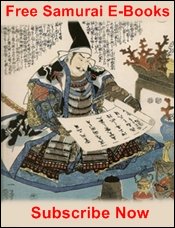
Get Free Exclusive Samurai Guides and E-books

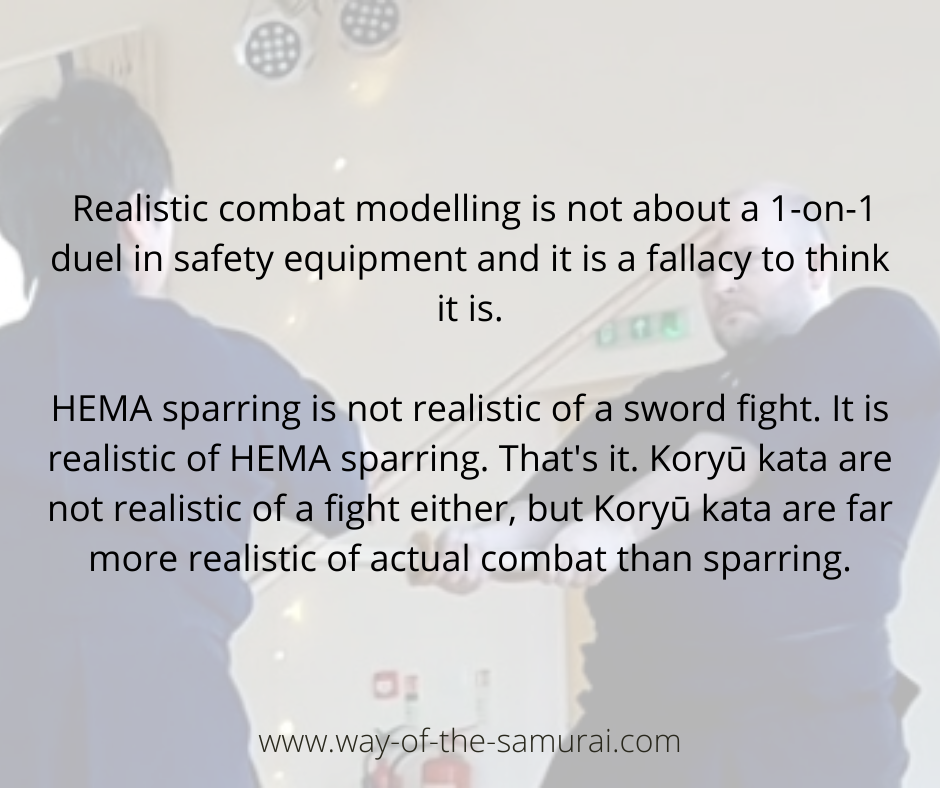
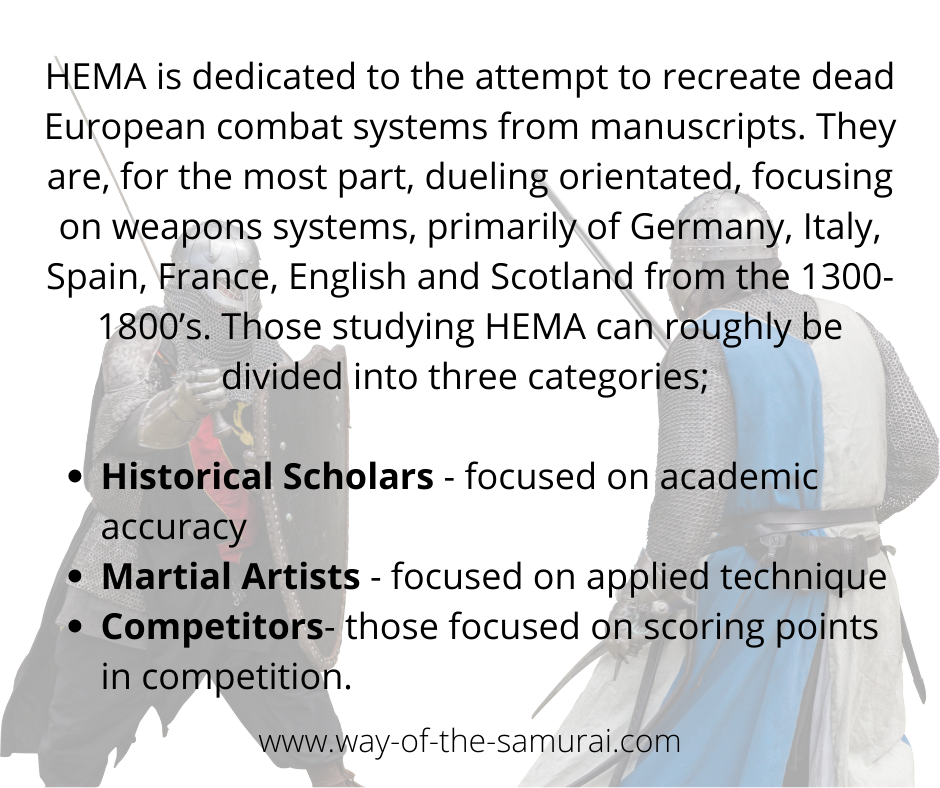
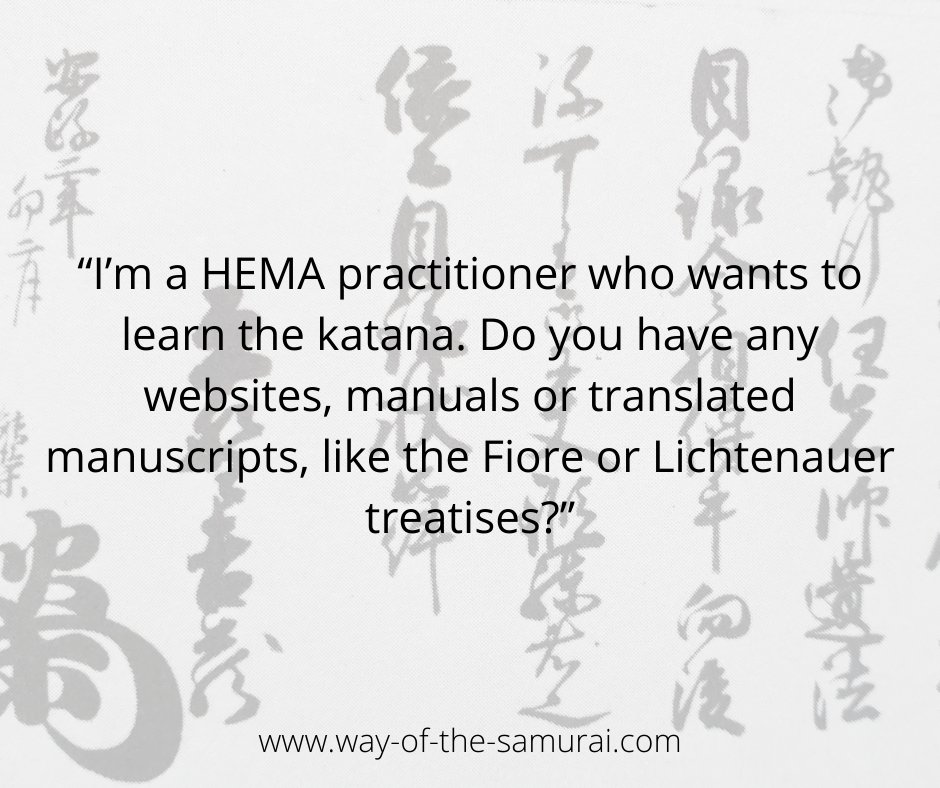




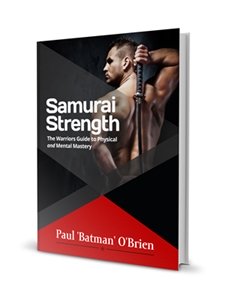
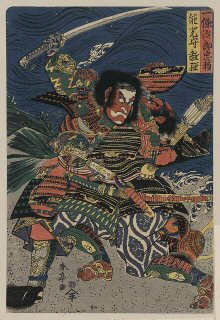
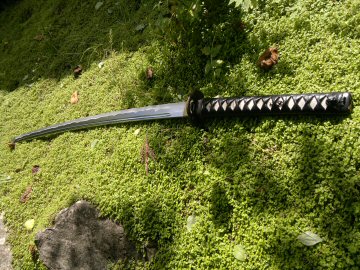
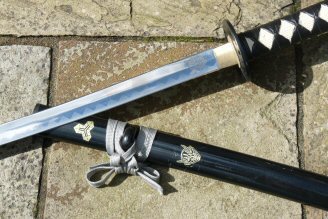
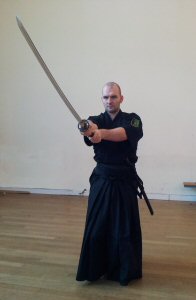
New! Comments
Have your say about what you just read! Leave me a comment in the box below.